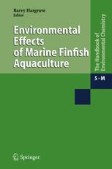Search
Search Results
-
Influence of air quality ranking on China’s energy efficiency: spatial difference-in-differences model with multiple time periods
Exploring the impact of air quality ranking on energy efficiency and its spatial spillovers will help improve the pollution and carbon reduction...

-
Can the opening of high-speed rail reduce environmental pollution? An empirical research based on difference-in-differences model
This study utilizes the opening of high-speed rail as a quasi-natural experiment and employs panel data from 281 Chinese cities at or above the...

-
The low-carbon city initiative and urban inbound tourism economy: a spatial difference-in-differences analysis
Although tourism is often treated as one of the crucial industries for the construction of low-carbon cities (LCCs), there is no systematic evidence...

-
New evidence of high-speed rail promoting green economic growth in the Yangtze River Economic Belt: empirical analysis based on difference-in-differences
The Yangtze River Economic Belt (YREB) is an important ecological barrier in China. From new perspectives, this paper explores the mechanism of...

-
Can urban rail transit reduce haze pollution? A spatial difference-in-differences approach
This paper explores the influence and mechanism of urban rail transit on haze pollution in mainland China. Based on the satellite remote sensing...

-
Influence of China’s environmental regulation policies on corporate green innovation: a space autoregressive difference-in-differences analysis
This paper uses the data of Chinese listed companies from 2008 to 2019, selects a space autoregressive difference-in-difference model (SAR-DID) to...

-
Can environmental protection policies promote regional innovation efficiency: a difference-in-differences approach with continuous treatment
Environmental regulation and innovative development are essential means to solve the negative externalities of environmental pollution. However,...
-
High-speed rail and city’s carbon productivity in China: a spatial difference-in-differences approach
Improving carbon productivity is an important measure to promote low-carbon development. Since high-speed rail (HSR) has both economic and...

-
Spatial difference-in-differences analysis of smart city pilot policy and industrial pollution reduction: the mediating role of S&T fiscal expenditure
Smart city has become one of the most important tool to achieve digital transformation and intelligent development. However, the impacts of smart...

-
Nexus between green finance and climate change mitigation in N-11 and BRICS countries: empirical estimation through difference in differences (DID) approach
Green finance is inextricably linked to investment risk, particularly in emerging and develo** economies (EMDE). This study uses the difference in...

-
Disentangling land model uncertainty via Matrix-based Ensemble Model Inter-comparison Platform (MEMIP)
BackgroundLarge uncertainty in modeling land carbon (C) uptake heavily impedes the accurate prediction of the global C budget. Identifying the...

-
Forecasting Hourly Ozone Concentration Using Functional Time Series Model—A Case Study in the Coastal Area of Bangladesh
Ozone has a significant impact on the environment. Atmospheric ozone concentration in coastal tourist areas now gains greater importance because...

-
A benchmark model for exploring the differentiation of trust in information sources in heterogeneous farmers’ green behavior
The literature reports that trust in information sources (ISs) is an important determinant of farmers’ adoption of sustainable environmental...

-
Thermal sensation prediction model for high-speed train occupants based on skin temperatures and skin wettedness
Passenger thermal comfort in high-speed train (HST) carriages presents unique challenges due to factors such as extensive operational areas, longer...

-
Impact of China’s carbon emissions trading scheme on urban air quality: a time-varying DID model
Using panel data for 277 Chinese cities, this paper applies a time-varying difference-in-differences (DID) model to empirically test the impact of...

-
TDG prediction model improvement by analysis and validation of experiments on a dam model
The combination of aerated flows and a high-pressure environment in a stilling basin can result in the supersaturation of total dissolved gas (TDG)...

-
Development of a novel mathematical model for leakage detection and localization in the water distribution system: based on the modification of the hydraulic model
As a result of contamination intrusion's inherent vulnerability, water quality security has been an important issue within water distribution systems...

-
Multi-decadal climate variability and satellite biases have amplified model-observation discrepancies in tropical troposphere warming estimates
Most coupled model simulations substantially overestimate tropical tropospheric warming trends over the satellite era, undermining the reliability of...

-
Numerical Model of Atmospheric Haze
TheAtmospheric haze NestedNumerical model Air Quality Prediction Modeling System (NAQPMS) is a new-generation fully coupled Eulerian model...
-
Near-Field Depositional Model for Salmon Aquaculture Waste
An analytical near-field depositional model for solids wastes (organic matter from waste feed and faeces) from open net pen culture of finfish is...
